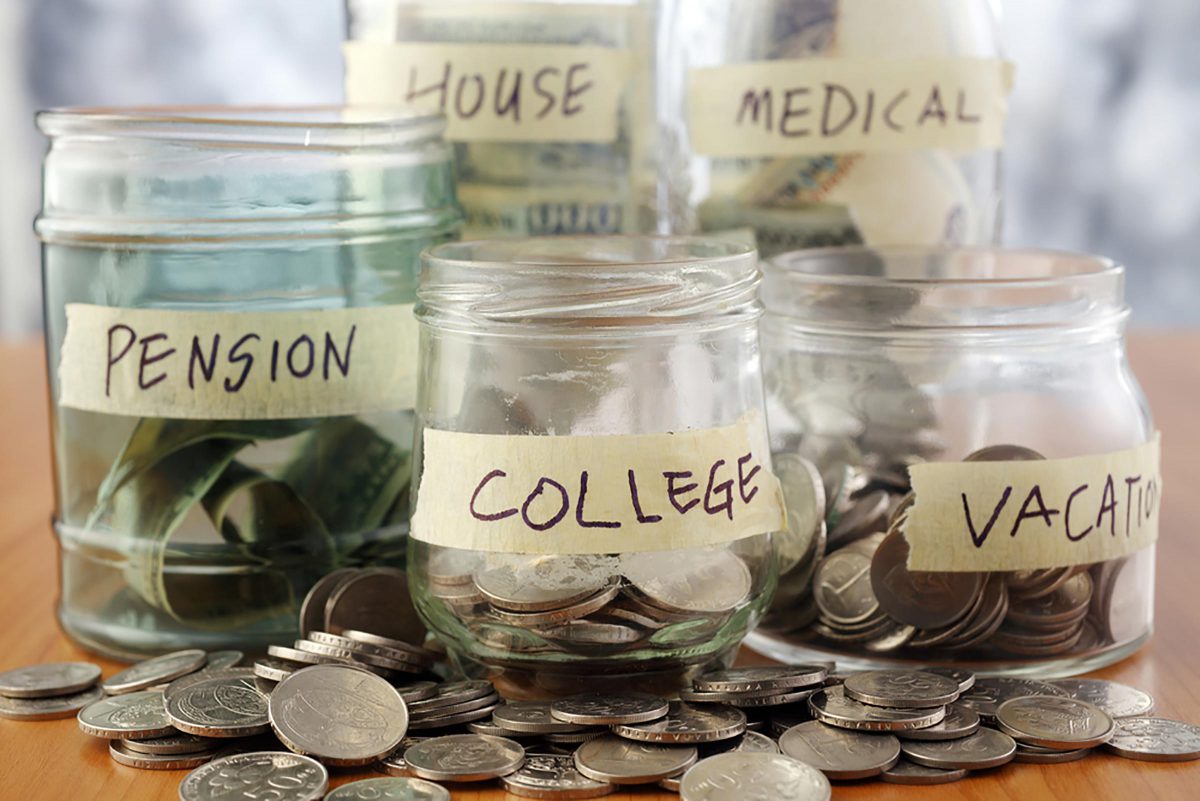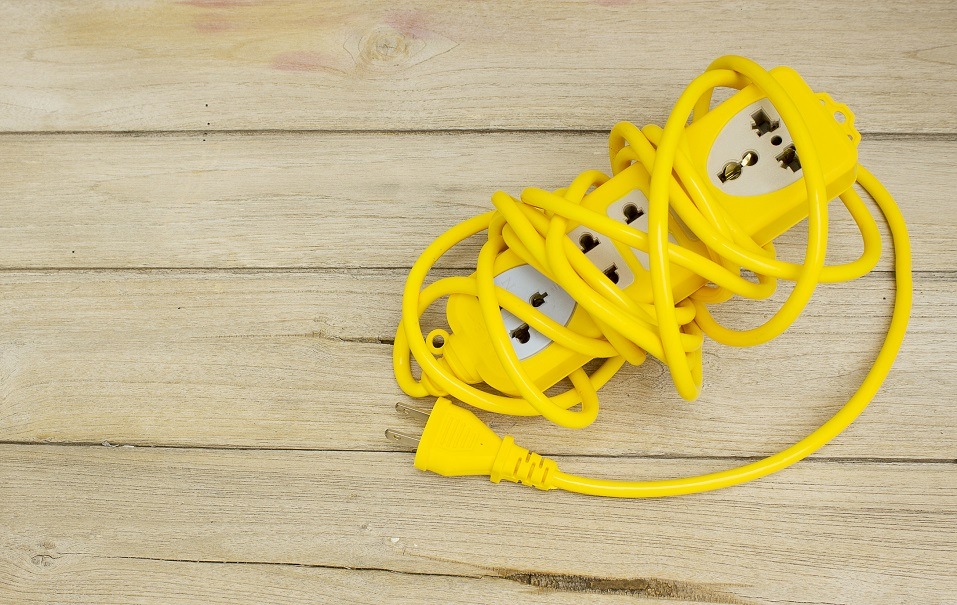If you’ve read any personal finance advice, you know there’s one simple rule that comes up time and again: You need a budget. A budget is a roadmap for where your money will go so you can make your hard-earned income work for you. Budgets assign your money a job and establish spending limits for specific expenditures so you can use your money responsibly.
Creating a personalized budget is essential to developing the right spending habits, setting aside money for the long term, and ensuring the money in your bank account goes where it needs to. But how do you make a budget?
Getting started with your first budget may seem complicated, but this Budgeting 101 article will walk you through every step in the process. You’ll learn how to budget, how to avoid common budgeting mistakes, and how to ensure your budget is one you can actually stick to.
Jump in, get started, and design a budget you can live on in no time.

IMAGE SOURCE: GETTY IMAGES.
1. Determine why you want a budget
According to surveys, only around a third of all households live by a strict budget. By deciding to budget, you’re joining a select minority — and your decision will pay off. Budgeters are almost twice as likely to report no financial worries compared with spenders, and they’re less likely to live paycheck to paycheck or struggle with finances.
While budgeting is always a great decision, it’s good to define goals before you start the process, since the reasons you’re budgeting may impact choices you make during the process. Common reasons to create a budget include:
- Finding a way to save more money
- Reducing overspending on problem areas
- Ending fights about money for couples
- Making sure your spending reflects your goals and values
- Breaking the paycheck-to-paycheck cycle
- Avoiding spending money you don’t have
- Getting out of debt
- Staying on track toward long-term financial goals
While it may seem silly to think about your motivations, psychology plays a big role in how we handle money. In fact, University of Maryland research into budgeting showed the process of creating a budget makes it more likely goals will be achieved because the process of hashing out the numbers creates an emotional investment, enhances motivation, and discourages cheating.
2. Do a deep dive into current spending habits
Before you can create a realistic budget, you need to know what your current spending habits are. If your budget isn’t realistic, it’s nothing more than a wishlist.
You won’t know if your budget is realistic until you’ve got an idea of where your money is currently going. Most experts recommend tracking your spending for about 30 days to get a clear picture of spending. There are a few ways to track spending:
- Enter your expenses into a spreadsheet or notebook: Whenever you make a purchase, write it down or enter it into a spreadsheet. This is the most hands-on approach but can be time-consuming and you might forget expenditures if not entered immediately. It helps to keep your receipts.
- Use an app: Apps such as Mint, Dollarbird, and PocketGuard make it easy to track spending by linking your credit cards and bank accounts. Link all accounts and ensure each purchase is labeled correctly to get an accurate assessment.
- Use your statements: Credit card and bank statements can help track spending, although this approach is less likely to produce detailed results because you may not remember what a particular transaction was for. Still, if you want to get started with your budget right away, going back over a month or two of old statements will give you a big picture to use as a jumping-off point.
Fewer than half of all Americans responding to Consumer Financial Literacy surveys indicate they have even a “somewhat good idea,” what they’re spending on food, housing, entertainment, and other essential expenditures — so figuring out where your money is going must be part of the budget process.
3. Use a calendar to catch irregular expenses
While tracking spending shows you where money goes on a day-to-day basis, your budget should also factor in funds for irregular expenses, such as holidays and birthdays.
Americans who borrowed to cover holiday costs took on over $1,000 in new debt during the 2017 season, according to a Magnify Money survey. Half of those who borrowed would still be repaying holiday debt at least three months later. By budgeting throughout the year, you’ll never get into holiday debt again. Some irregular expenses in your budget might include:
- Christmas, Hanukkah, or other gift-giving holidays
- Birthdays
- Annual car inspections and registrations
- Annual vacations
- Property taxes
- Professional dues
- Annual insurance premiums
- Annual medical exams, including veterinary exams
Your calendar and past credit card statements will help you make a list of all expenses that crop up throughout the year.
4. Add up all of your income
Budgeting is about making the best use of income, so you need to know how much money you have coming in. Factor in income from all sources including:
- Wage income
- Money from side gigs
- Alimony and/or child support
- Business income
- Income from investments
If your income is variable, one of the best budgeting approaches is to pay yourself a salary. This means you’ll decide on a monthly “salary” to base your budget around and when extra money comes in, save it in case of a bad month later. The monthly income you choose as your salary could be based off what you earn on average, or what you’d typically earn in a bad month if you want to build a bigger cushion and reduce the risk of overspending.
Those with irregular incomes could also live off last month’s income, updating their budget each month based on what they earned the month prior — but this is a more labor-intensive approach.
5. Identify your personalized financial goals
Most people who make a budget do so because they want to accomplish more with their money. This usually involves achieving long-range financial goals such as:
- Saving for retirement
- Building an emergency fund
- Buying a house
- Purchasing a new vehicle in cash
- Paying off debt
- Saving for college
- Saving for a vacation or other big purchases
When you set goals, you can align your budget around achieving them by deciding how much you need to set aside to accomplish each goal. Goal setting has been shown repeatedly by studies to increase motivation and achievement. To be effective, your goals should:
- Be specific: Instead of “save for a house,” your goal should be “save $100,000 for a down payment.”
- Include deadlines: When do you want to buy that house or purchase a new car or retire or send your kids to college? Set a target date by which you’ll need to achieve your goal.
Setting goals is the single most crucial part of making a budget. If you don’t use your budget to make sure you’re working toward goals, all you’re doing is shifting spending and you’ll still have nothing to show for your money in the end.
6. Decide how much to save
Once you’ve got your financial goals, decide how much you need to save for each goal. If you want $100,000 for a house down payment in five years, save $1,666 monthly. If you want to build a $1,000 emergency fund by next year, save $83.33 a month. If you want to pay off $5,000 in debt at 10% interest by the end of the year, make $440 in monthly payments.
It can be hard to know how much to save for big goals, like college, a house, or retirement. Check out these guides for help:
- How much to save for retirement
- How much house can you afford
- How much to save for college
The more specific you can be about how much to dedicate to each goal, the more likely you’ll achieve it. But if you don’t want to go through this whole exercise, take a shortcut and make a plan to save at least 20% of your income. You can devote 15% to retirement savings and the rest toward other goals.
7. Schedule a household meeting
If you’re single, you don’t have to worry about getting anyone else on board. But if you have a life partner, budgeting is a team project.
Money is a leading cause of relationship stress, with 35% of couples in a SunTrust Bank survey citing money as the cause. If you aren’t on the same page, your attempts to budget may be thwarted when your spouse hits the mall or splurges on Super Bowl tickets — and this is bound to cause strife.
It’s important to have a state-of-the-union meeting even if you maintain separate finances so your partner will understand why your spending habits may change and how he or she can support your efforts.
8. Decide what kind of budget you want to make
Now that you’ve done the preliminary work, it’s time to actually make a budget. Of course, there’s not just one type of budget, so you’ll need to choose which makes sense for you. Primary options include:
- A zero-based budget: This is the approach popularized by Dave Ramsey and it involves making income minus outflow = $0. With a zero-sum budget, every dollar you have is assigned a job, with some of those dollars going into savings and the rest assigned to different spending categories. This type of budget can be restrictive, so it’s not right for everyone — but it helps with avoiding overspending, and meeting goals including debt repayment.
- A 50-30-20 budget: With this approach, which Sen. Elizabeth Warren (D-Mass.) helped create, 50% of income is allocated toward needs, such as rent, food, and minimum payments on debt. Thirty percent is earmarked for wants, such as trips or entertainment. Finally, 20% goes toward savings. If you choose this approach, you’ll have a lot more flexibility — but may still up spending irresponsibly in some areas. Automating savings is key to making this budget work so you don’t ever shortchange yourself.
Everyone’s budget will be different, but here’s a rough example of a budget, assuming you bring home $4,000 in income each month.
| Expense |
Monthly Budget |
| Retirement savings |
$600 |
| Emergency fund |
$80 |
| Travel fund |
$100 |
| House downpayment fund |
$450 |
| Christmas fund |
$30 |
| Rent |
$1000 |
| Utilities |
$300 |
| Car payment |
$250 |
| Gas and vehicle maintenance |
$300 |
| Insurance premiums |
$200 |
| Cell phone |
$50 |
| Groceries |
$400 |
| Clothing |
$50 |
| Entertainment |
$150 |
| Wiggle room |
$40 |
| Total |
$4000 |
9. Choose a tool to make your budget
The next step is to decide on the logistics of creating your budget. The sample budget above was made in a simple Excel spreadsheet and this approach can be a great one because you don’t need to download any special apps or learn any new programs.
If you want a tool that will allow you to automatically see if you’re on budget, there are plenty of apps you can use. Popular budgeting apps include:
- Mint: Mint is free and offers the option to create a budget. When your bank and credit cards are linked, Mint will track how well you keep to budget limits. You can choose categories of spending, set limits, specify how frequently each expense will occur, and specify whether to start each month with leftover amounts from the prior month.
- You Need a Budget: YNAB costs $6.99 per month but is billed annually at $83.99. You can try YNAB for free before committing to see if it works for you. You can set spending limits for each different kind of spending, connect your bank accounts to track progress and get detailed reports.
- PocketGuard: PocketGuard builds a budget for you, based on income and goals you set. The app tracks where your money is going and alerts you to how much it’s safe to spend. The app is free unless you upgrade to PocketGuard Plus, which is $3.99 per month or $34.99 per year.
Here’s an example of Mint’s budgeting program to see how this software works. But don’t get caught up in choosing the right software. If you’re overwhelmed and not sure where to start, your Excel spreadsheet will do fine.

IMAGE SOURCE: MINT.
10. Put pen to paper — or fingers to keyboard
So, now that you’ve decided which approach to take and know what you’re spending, it’s time to input your numbers.
To start the process, define what categories you’ll use. You can be as specific and detailed as you want. You could have a category for groceries and a separate one for eating out or a general “food” line in your budget. You could group all entertainment spending in one category or, if you love to shop for books, could have a separate line item in your budget.
Once you’ve got your categories broken out, set your desired spending limit for each one. Base these numbers off what you found when tracking spending. If you were spending $800 a month on groceries, you may decide to cut back — but do so realistically. Don’t budget only $200 because you’ll set yourself up to fail.
You should also build in a little wiggle room because unexpected expenses will happen. This should be a line item in your budget with a set amount of extra money each month available in case you go over in another spending category or have a surprise bill show up. For most people, around $50 to $100 is a good number.
When you’ve put the numbers on paper — including your desired amount of savings to meet your goal — make sure your spending matches income or aligns with the 50-30-20 buckets. If you find that you’re spending more than you have available, either cut spending down or increase income through a side hustle. Keep adjusting the numbers until they work.
11. Avoid these common budgeting mistakes
Budgeting is an imperfect process, so don’t be discouraged if you don’t get everything right the first time. To maximize your chances of success, it’s helpful to learn from the experience of others. You can read about common budgeting mistakes to avoid these big errors in your budget:
- Unrealistic expectations: If you make a budget you can’t possibly stick to, you’ll set yourself up for frustration.
- Budgeting based on gross income: Take-home pay minus taxes and deductions for health insurance premiums, is lower than your annual salary. When you set up your budget, you’re finding jobs for dollars you actually bring home each month. Look at bank deposits to see how much your actual inflow is and budget based off that amount.
- Failing to consider big changes: Often, people who find that income isn’t high enough to meet expenses start looking for discretionary expenses to cut. You may cancel cable TV and give up eating out. While little cuts can be helpful, sometimes it’s big, fixed expenses that cause problems. Selling your car with the $400 a month payment, getting a roommate to cut the rent in half, or moving to a cheaper house will do way more to free up money than cutting a few coupons or downscaling your cellphone plan.
There’s lots more advice about budgeting mistakes you can learn from, and you’ll likely make your own unique mistakes — but over time, the process will get easier.
12. Determine how you’ll hold yourself accountable
Making a budget is only the first step. You have to figure out how to live by your budget. Some people are disciplined enough to just do it, but there are also techniques that can help you stay with your plan. Some of the best approaches include:
- Automation: Put your bills on autopay — including extra payments to debt — and automate transfers to retirement and savings accounts. When money moves where it needs to go before you get a chance to see it, you’re less likely to spend it.
- The envelope system: The envelope system involves physically putting cash in an envelope for each spending category and labeling it. Spend only money from the proper envelope on all purchases in each category. When the money is gone, you’re done spending for the month.
- Tracking spending: You’ll need to continue to keep track of spending to see if you’re sticking within your limits. Apps help. When you link accounts with budgeting software, you can see right away where money is going and the app should generate reports showing whether you stuck to your budget.
If you have a partner, you can hold each other accountable by working together to make sure you’re sticking to the spending limits you’ve set.
13. Set up a monthly budget review
Finally, it’s important to check in with your budget and make adjustments as needed. See how you did each month, where you overspent, and if you had extra left over. Then, adjust your budget according to what you’ve learned.
Your life will change over time so changes will always need to be made. Once you’ve got a good baseline budget, however, making tweaks is easy.
Now you know how to budget to save money and cut spending
Whew! You’ve gone through all the essential steps of the budgeting process now. If you’re feeling overwhelmed, don’t be. Budgeting is really easy once you’ve gotten the hang of it — and now you know every step you need to take to budget so you can make your hard-earned money work for you. Start budgeting today and you’ll see how much happier you are when you live on a budget, save money for your future, and spend guilt-free.
Something big just happened
I don’t know about you, but I always pay attention when one of the best growth investors in the world gives me a stock tip. Motley Fool co-founder David Gardner and his brother, Motley Fool CEO Tom Gardner, just revealed two brand new stock recommendations. Together, they’ve quadrupled the stock market’s return over the last 17 years.* And while timing isn’t everything, the history of Tom and David’s stock picks shows that it pays to get in early on their ideas.




























